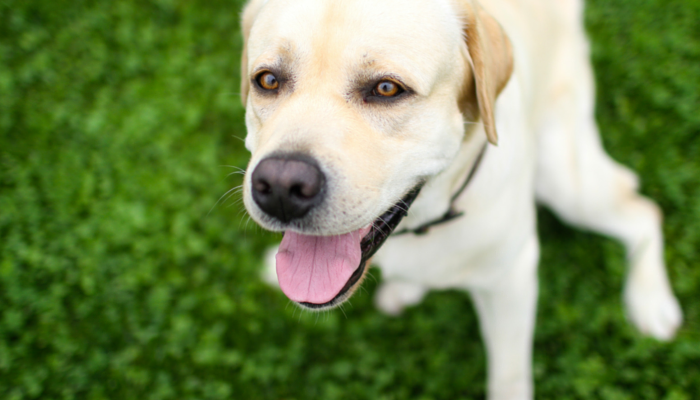How I Got Started With Positive Reinforcement
Growing up I didn’t think of dog training as anything other than teaching my dogs a few tricks and having them reliably go to the bathroom outside.
Hell I didn’t even consider things like having proper leash manners, reinforcing relaxation or using proactive measures to prevent issues at all. We just did what we did, and that was basically a few tricks, going for our daily walks & playing fetch.
And then I became an adult, had dogs of my own and started to hear interesting new concepts from people like Ian Dunbar, Victoria Stilwell & Kikopup (just to name a few).
They were explaining how positive reinforcement training works, and it was like a whole new understanding of dog behavior started to take shape in my mind. Counter conditioning, clicker training and consistency. Things I’d never considered when working with dogs, yet they all made perfect sense with little I knew from living with dogs my whole life.
Here’s how I got started with positive reinforcement and why I’ll never go back to punishment based training.
My Holy Cow This Makes Perfect Sense Moment
I’d already heard a thousand times that dogs want to please us, but I’d never thought about it besides giving them a treat when they sat on command. You can use that same concept for all sorts of behaviors? My mind was blown.
It’s one of lessons that that feels like “how in the hell did I not realize this before?” Positive training is powerful stuff, and it’s a little embarrassing how long it took me to fully embrace it.
I’d always had a strong love for dogs and thus read every dog-related book I could find growing up, but they certainly weren’t teaching anything like this. They were proponents of punishing house training accidents & alpha rolling puppies to get a good sense of their personalities…
And the sad part is this isn’t really shocking, this was the norm for a long ass time. People had been alpha rolling their dogs & rubbing their faces in urine for years, probably not thinking twice about whether or not it’s the “best” way to really teach your dog what you want.
I’m glad to say I didn’t participate in any of that alpha rolling nonsense or the punishment phases of house training. But I was guilty of yelling at my dog when they misbehaved, and unfortunately I did yank their leashes from time to time if they misbehaved. Lesson learned Jen, lesson learned.
Punishment Based Methods Were The Norm Growing Up
I think many of us who grew up in the 80s or 90s (or before) have similar memories. Correcting inappropriate dog behavior with yelling or tugging was the norm. We didn’t think of things like “how can I prevent this from happening?” or “is there something I can use to redirect my dogs attention?” We did these things because we saw others doing them. It was the norm.
In thinking of my experience, and hearing the experiences of colleagues and clients, I’ve come to believe that we are all “crossover trainers” to various degrees. Even if we’ve never used a shock or prong collar on a dog, there was a point in time when we didn’t know about Skinner’s quadrants or how to implement classical conditioning. Our interactions with current dogs are most likely different than interactions with dogs 10, maybe even 5 years ago. – We’re All Crossover Trainers
So yeah, I’ll admit it: I’m a ‘crossover trainer’. I used to use yelling & negative reinforcement with my dogs. It’s certainly not something I’m proud of, but it is what it is.
As terrible as some of the methods I used were it’s certainly served as an important life lesson. People change. We’re not the same person we were 10 years ago, and our evolving opinions, methods & skills aren’t a sign of weakness or being a lousy ‘flip-flopper,’ they’re (usually) a sign of growth.
Think about this for a moment: If you were to act exactly as you did 10 years ago in your current position would that be a good thing? For me I believe I’ve grown to be better, especially when it comes to interactions & relationships with others.
Positive Reinforcement Improved my Problem Solving Skills
Learning about positive reinforcement not only led to more understanding of dog behavior & impulses, it’s led me to being more positive with all the humans I interact with. I’m a lot more open to saying “good job” or “that was awesome” than I used to be – and that feels damn good.
I don’t just freak out & start yelling to get what I want or to stop something from happening – I think about all the aspects involved and try to come up with a positive solution for all. Learning about positive reinforcement led to developing some hardcore problem solving skills. Is that only due to learning about dogs? Probably not, but it certainly helped.
But going back to the way I was (and the way we probably all were at some point) I’m just glad I was exposed to theories other than “teach your dog whose boss.” I still remember watching this amazing Ted Talk by Ian Dunbar & the feeling it left me with – complete awe & inspiration. Why the hell didn’t I think of this before – it all make so much sense!
All you’ve got to do is to watch them, to time-sample the behavior, and say, every five minutes, you ask the question, “Is it good, or is it bad?” If it’s good, say, “That was really neat, thank you.” That is such a powerful training technique.
How I Use Positive Reinforcement Today
How I define positive reinforcement training and use it with Laika may not be the exact technical or scientific description, but it’s a method that works for us. I’m quite liberal with giving praise, whether it’s because she decided to not freak out at that squirrel or whether she decided to relax by my feet as I type this.
I don’t need to yell at her or yank her chain to get her to behave, I just need to think ahead to avoid setting her up for failure (letting her outside while there’s a cat in the driveway), and remember to tell her each time she does something great.
Keep in mind that if you ignore the animal and only pay attention to him when he is doing undesirable behavior, you will be training the animal to do exactly that which you do not want by providing your attention whenever the behavior occurs. So the GOAL is to reward the animals alternate responses to the same situations in conjunction with interrupting and preventing the undesirable behaviors. – Progressive Reinforcement Training Manifesto
I’ve learned more about dogs in the past 10 years (not just because of this blog) by using positive reinforcement than I did with all my previous years & experience combined. Dogs do want to please us, but there’s more to pleasing us than just learning a few tricks.
They want to be part of the family, they want to be engaged with us and they want to know what it expected of them. Unfortunately many of those old school negative punishment methods do very little to address any of that. They might do a good job of addressing displeasure, but they certainly don’t do anything in regards to offering an alternative.
Positive reinforcement training has changed all that for me. My relationship with Laika is deeper than with previous dogs, and it’s all because of the skills that positive methods have given me. I no longer feel the need to dominate my dog. Nowadays I feel the need to understand my dog better & be a good leader for her.
I want to provide her with stuff to do and I want to keep giving her clear expectations & goals. I want her to understand how awesome she is when she decides to calmly meet a new dog.
The training of animals in zoological and aquarium settings is gaining acceptance as a valuable animal care and management tool. Recognized benefits include: animals’ voluntary cooperation in veterinary procedures, reduction in aggressive behavior, and increased positive social interactions. – Positive Reinforcement Training as an Enrichment Strategy
Is Positive Reinforcement Becoming the Norm?
Positive reinforcement seems to slowly becoming the norm, and I believe we’ll all and up with better relationship skills because of it. How long will it take before the majority of us consider it the norm? I don’t know, but we’ve certainly come a long way in the past 10 years alone.
By clearly defining good behaviors with praise or treats I’m able to communicate to her what an awesome dog she is. And do you know how she reciprocates? By being the best dog ever.
Do You Consider Yourself a Crossover Trainer?
When did you start to adopt positive reinforcement with your dog? What are some of the methods you used to use? Did you grow up thinking that rubbing a dogs nose in urine is the only way to housetrain?
We’re joining the Positive Pet Training Blog Hop hosted by Tenacious Little Terrier and Rubicon Days. It begins on the first Monday of each month and runs all week long.

